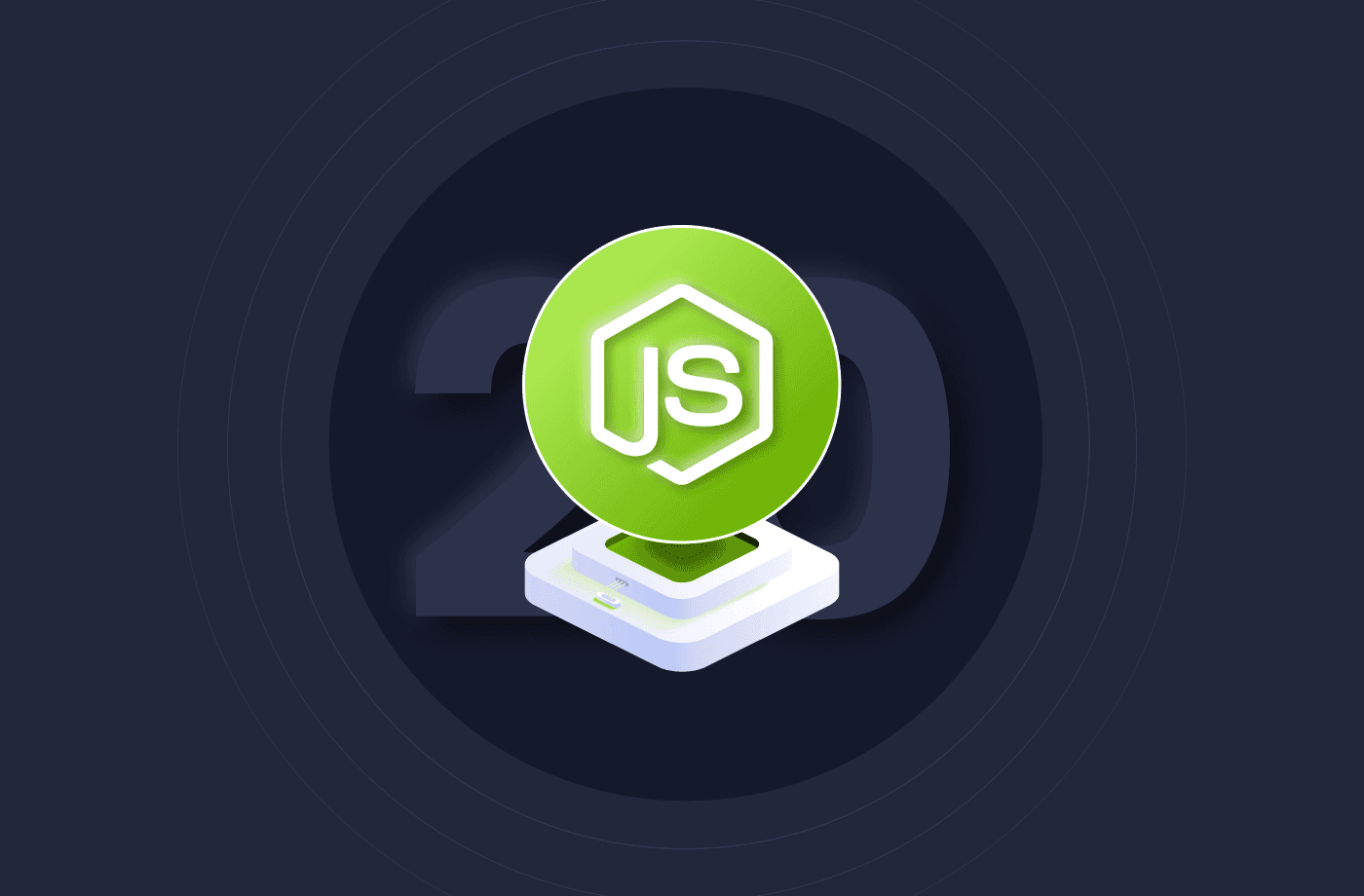Jump to
- Performance Enhancements: A Closer Look
- WebAssembly System Interface (WASI): Progress and Potential
- V8 11.3: Delving into the Enhancements
- Stable Test Runner: Implications for Development
- Web Crypto API: A Technical Perspective
- Custom ESM Loader Hooks: Refining Module Loading
- Single Executable Applications (SEA): Simplifying Deployment
- The New Permission Model: Enhancing Security
- Conclusion: Node.js 20 from a Developer's Lens
- How can Amplication help?
The release of Node.js 20 marked another step in the platform's evolution, introducing a range of features that cater to the needs of modern software development. This article provides a detailed examination of these features, emphasizing their technical implications and potential applications.
Performance Enhancements: A Closer Look
Node.js 20 has integrated Ada, a URL parser updated to version 2.0. This inclusion is expected to optimize the efficiency of applications, particularly in scenarios where URL parsing is frequent or complex. For API developers, this translates to reduced processing times for requests that involve URL manipulations.
WebAssembly System Interface (WASI): Progress and Potential
The advancements in the Web Assembly System Interface (WASI) are noteworthy. The removal of the command line option to enable WASI simplifies its activation, allowing for a more straightforward integration of WebAssembly code. This development can be particularly beneficial for APIs that require cross-platform capabilities or those that leverage WebAssembly for computationally intensive tasks.
V8 11.3: Delving into the Enhancements
The integration of the V8 11.3 JavaScript engine brings several technical improvements:
- Methods such as String.prototype.isWellFormed and toWellFormed provide more efficient string handling mechanisms.
- The introduction of methods that modify Array and TypedArray by copy offers alternative data manipulation techniques.
- Features like Resizable ArrayBuffer and growable SharedArrayBuffer enhance memory allocation strategies.
- The RegExp v flag with set notation and properties of strings expands pattern-matching capabilities.
- The WebAssembly Tail Call optimizes recursive function calls, reducing the stack overhead.
For developers working on data-intensive APIs or those requiring complex pattern matching, these features offer refined tools for optimization.
Stable Test Runner: Implications for Development
The stabilization of the test_runner module in Node.js 20 underscores the platform's commitment to reliability. This module provides a comprehensive suite for testing, ensuring that APIs function as expected across various scenarios. For instance, developers can structure their tests using components like describe, it/test, and hooks. The module also supports mocking, watch mode, and parallel execution of multiple test files.
Example: Consider an API that interacts with a database. Using the test_runner, developers can mock the database interactions, ensuring that tests run efficiently without actual database calls. This not only speeds up the testing process but also ensures that tests are not dependent on external systems.

Web Crypto API: A Technical Perspective
The Web Crypto API in Node.js 20 has been aligned with WebIDL definitions, ensuring consistency with other implementations. This alignment is crucial for cryptographic operations, ensuring data integrity and security during transmission.
Custom ESM Loader Hooks: Refining Module Loading
The modifications to ES module loading in Node.js 20 are significant. By running custom ES module lifecycle hooks in a dedicated thread, the platform ensures that module loading doesn't impede the main application thread. This change can be particularly beneficial for large-scale applications where efficient module loading can impact overall performance.
Single Executable Applications (SEA): Simplifying Deployment
Node.js 20's support for SEA with BLOB injection provides a streamlined deployment mechanism. For developers aiming to package their APIs or applications as single executables, this feature reduces the complexities associated with multi-file deployments.
The New Permission Model: Enhancing Security
The introduction of a new permission model in Node.js 20 provides developers with a mechanism to define granular access levels to system resources. This feature is pivotal for APIs that interact with various system components, ensuring that only necessary interactions are permitted, thereby reducing potential security vulnerabilities.
Examples:
Specific File System Paths: Developers can grant permissions to specific file paths, ensuring that the API can only access designated directories or files. For instance, using the flag --allow-fs-read=/path/to/specific/directory ensures that the API can only read from the specified directory.
Disabling Worker Threads: If an application doesn't require multi-threading, developers can disable worker threads entirely using the --disallow-worker flag. This ensures that no part of the application can spawn additional threads, reducing potential attack vectors.
Restricting Network Access: Developers can restrict network access to specific domains or IPs using flags like --allow-net=example.com. This ensures that the API can only communicate with whitelisted domains, enhancing security.
Conclusion: Node.js 20 from a Developer's Lens
Node.js 20 presents a suite of features and enhancements that cater to the nuanced needs of today's developers. By offering refined tools for performance optimization, enhanced security mechanisms, and streamlined deployment options, it provides a robust platform for modern software development. As developers continue to navigate the evolving landscape of server-side development, Node.js 20 stands as a testament to the platform's commitment to technical excellence.
How can Amplication help?
To build better Node.js-powered microservices, you should consider using tools like Amplication.
Amplication is an open-source code generator for backend services that accelerates development by creating fully functional Node.js services. Amplication generates all the repetitive parts of microservices architecture, including communication between services using message brokers with all the best practices and industry standards.
With its user-friendly visual interface and code generation capabilities, Amplication simplifies building scalable applications. By defining your data model within Amplication, you can automatically generate the necessary code and configurations, which allows you to focus on coding your actual business needs rather than spending time on repetitive boilerplate code.

